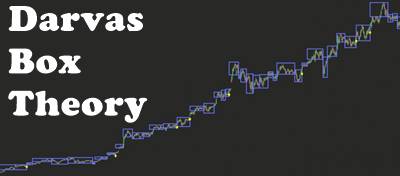What is Odd Lot Theory?
Odd lot theory refers to a Technical Analysis hypothesis based on the premise that small individual investors are more likely to create odd-lot sales than large institutional investors. If odd-lot sales are up and small investors are selling a stock, it's probably a good time to buy, and if odd-lot purchases are up, it's probably a good time to sell. The odd lot theory is concerned with the behaviours of individual investors who trade odd lots.

This hypothesis also posits that professional investors and traders prefer to trade in round lot sizes (iterations of 100 shares) to maximise order price Efficiency. This way of thinking was prevalent from approximately 1950 to the turn of the century, but it has since faded.
Odd-Lot Dealer Meaning
The odd-lot dealer is a broker who mixes the securities' odd lots from several purchases or sells orders into round lots. This person is in charge of completing deals in those round lots.
Odd Lot Market NSE
If there is a smaller order size than the regular lot size, it is called an odd lot order. There are no specific terminology attributes associated with these orders. For a trade to occur in an odd-lot Market, the price and amount of both the purchase and sell orders (buy and sell) must be the same.
Talk to our investment specialist
Board Lot vs Odd Lot
A board lot is a prescribed number of shares established by two factors: the stock price and the exchange where the security trades. A board lot is typically 100 shares for equities priced at $1 or more. An odd lot is when you exchange a number of shares that aren't part of a full board lot.
Odd Lot Trading and Odd Lot Theory Example
Investors who place odd lot trades include fewer than 100 shares in the transaction or are not a multiple of 100. According to the hypothesis, individual investors who are less educated and influential in the market as a whole are covered by these trading orders. The opposite of odd lots is round lots. They start with 100 shares and can be divided by 100. As professional traders or institutional investors often place these trade orders, they are seen as more reliable indicators.
Although technical analysts can use charting software for tracking the number of odd-lot trades, testing since the 1990s shows that these trades do not appear in signal market turns.
Individual investors may be likely as institutional ones to make an informed trade due to the information efficiency. While the odd-lot hypothesis suggests that these investors are more crucial to watch for trade signals, experts have become less interested in this concept because of a variety of factors.
- Individual investors began to invest more significantly in Mutual Funds, pooling money and distributing it to institutional investors
- Second, fund managers and individuals began to use Exchange-Traded Funds (ETFs), with high volumes for the most popular ETF offerings
- The growing automation and computerisation of market-making organisations and the increased technology of high-frequency traders are the third cause
These variables have combined to produce an atmosphere where order processing is significantly more efficient. Due to the increased efficiency of the markets, odd lots are processed just as effectively as round-lot orders.
Odd Lot Trading Indicator
The Odd Lot Balance Index (OLBI) is a market mood indicator that displays the ratio of odd-lot sales to odd-lot purchases. The notion is that the market's smallest traders, known as "odd lotters," have no idea what they do.
Testing the Odd Lot Offer
The odd lot theory appears to be ineffective in general, according to research completed in the 1990s. It's tough to say whether this is because individual investors are less likely to make poor investment selections or because institutional traders no longer dread trading in odd lots.
Overall, many experts and academics believe the hypothesis is no longer valid. According to author Burton Malkiel, the individual investor (the odd lotter) is not as uninformed or inaccurate as previously imagined.
Conclusion
When a firm offers to buy back shares of its stock from people who own less than 100 shares, this is known as an odd-lot buyback. Odd-lot shares can be acquired in a variety of methods, including dividend reinvestment programs (DRIPs) and reverse splits.
The odd-lot hypothesis is more than a buy-and-sell signal theory. It's a notion concerning individual investors' sophistication and conduct. Surprisingly, the evidence for the odd-lot idea is contested and, in some situations, contradictory.
All efforts have been made to ensure the information provided here is accurate. However, no guarantees are made regarding correctness of data. Please verify with scheme information document before making any investment.












